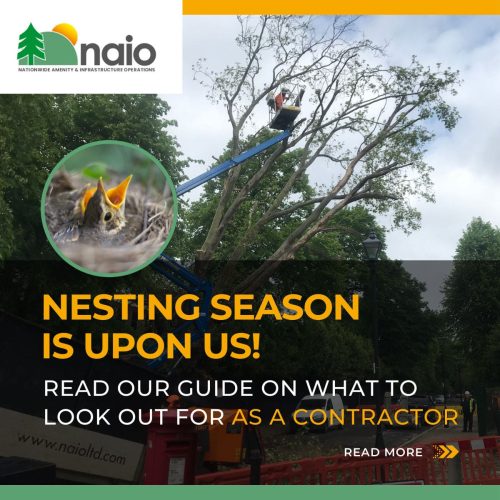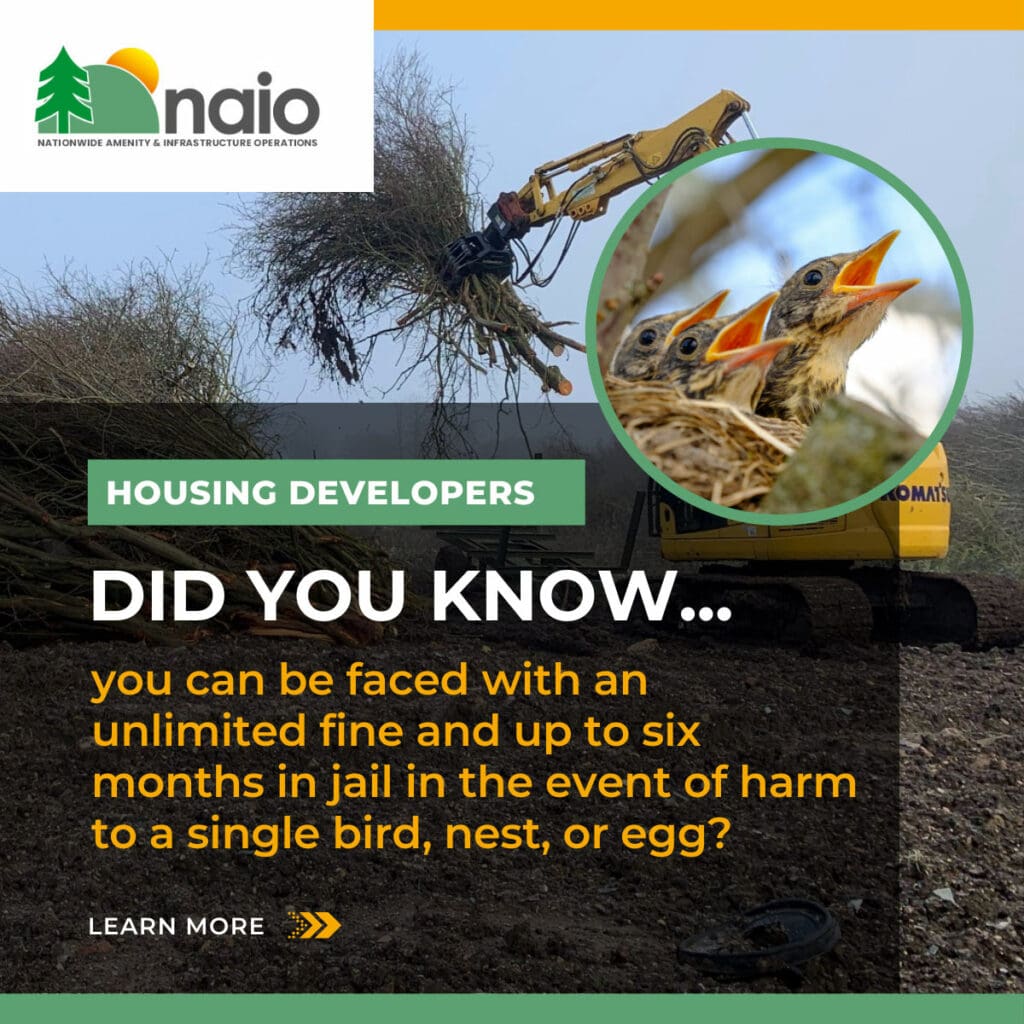
A Guide to Nesting Season Compliance for arborists, housing developers, contractors and more.
As evenings become lighter, this marks the start of nesting season, when wild birds come together to create houses for their young.
What is nesting season?
Nesting season, which runs from February to August (with a start date that moves forward with global warming), imposes a high degree of compliance requirements on people who work closely with the natural environment, such as arborists, housing developers, and more.
All wild bird species, as well as their eggs and nests, are legally protected. Birds have the freedom to reproduce peacefully without endangering their home or family. Individuals must find ways to perform their usual activities in a way that does not disturb breeding birds during this time.
As contractors, you must endeavour to prevent harming nesting birds which would violate the Wildlife and Countryside Act 1981 and the European Habitats Directive 1992/Nesting Birds Directive.
When tree or vegetation clearing work is required during the nesting season, a pre-work survey by a qualified person is required. As a general rule, it is reasonable to presume that birds will be nesting in trees, and it is your responsibility as contractors to assess, document, and confirm that any tree and other vegetation management activity will not disrupt actively nesting birds.
So, what is the law?
If a person violates the Wildlife & Countryside Act 1981, they will be considered to be breaching the law if they:
- Kill, injure, or capture wild birds on purpose.
- Take, damage, or destroy a wild bird’s nest when in use or being constructed.
- Take or destroy a wild bird’s egg on purpose.
- Possess or transport live or dead wild birds, or portions of them, or their eggs is prohibited.
- Sell wild birds or display them for sale.
- Use illegal ways to kill or capture wild birds.
- Disturb any wild bird listed in Schedule 1 when it is nesting, or at a nest containing eggs or young, or disturbs the dependent young of such a bird, whether intentionally or not.
If a single bird, nest, or egg is harmed, the penalties include an unlimited fine, up to six months in prison, or both.
What is a Schedule 1 species?
Wild birds are divided into ‘Schedules,’ each with its own set of rules. Schedules range from one to four, with Schedule 1 species having the most stringent safeguards – this category covers low-population, endangered, or declining species.
While the wellbeing of all wild birds is important, Schedule 1 species are considered a higher priority. Intentionally damaging the breeding area of a Schedule 1 species can result in steep penalties and a six-month prison sentence.
Where can nests be found?
Some species begin nesting season as soon as possible, while others wait until the weather cooperates. Many birds in the passerine (perching) family will have several clutches during the nesting period.
As there are so many species with such a diverse range of behaviours, nests can be found in a variety of sites, from roof rafters and lofts to fields, woodlands, and hedges. A common tell-tale sign is the sound of birdsong to attract mates, communicate, or defend their territory.
Nonetheless, it’s reasonable to presume that any outdoor place, particularly wild areas, can be home to breeding birds — whether or not you can hear them.
How can you tell if a nest is active?
If a nest is in use or being created, it is considered active. It is prohibited to destroy it after it has become operational. Unfortunately, it’s fairly common for a bird to use a nest once and then abandon it, making it difficult to determine whether it’s still in use.
However, if you see a nest, it’s wise to be cautious and presume it is still active.
Contact us for assistance – [email protected] / 01621 893775


